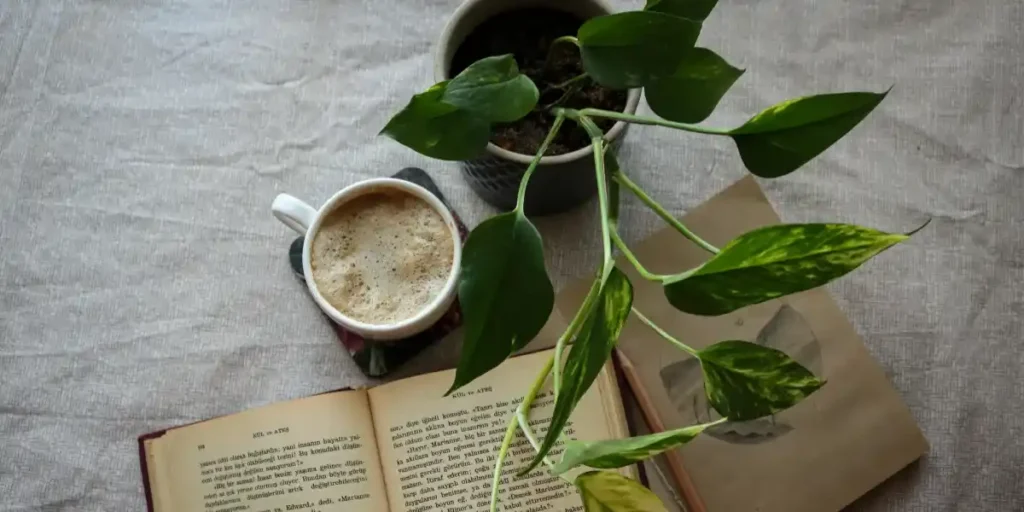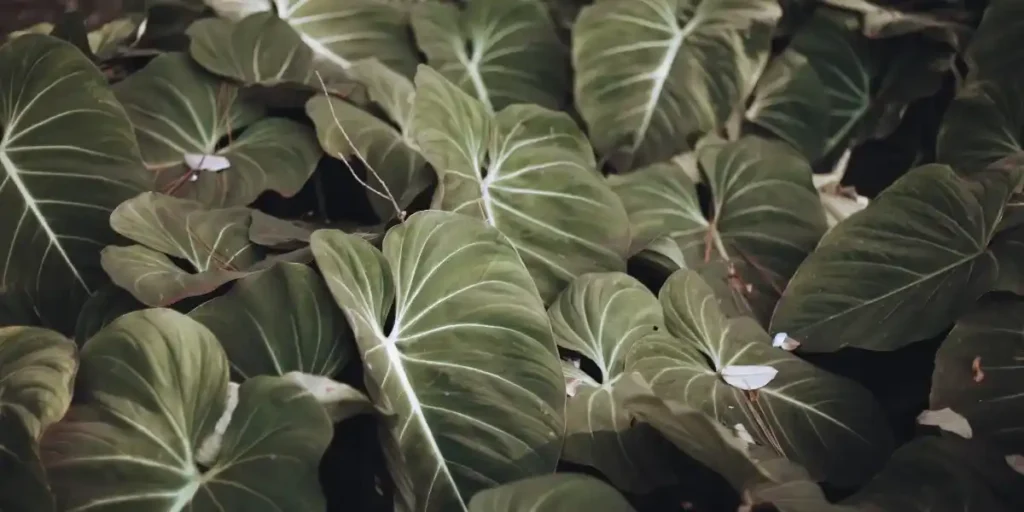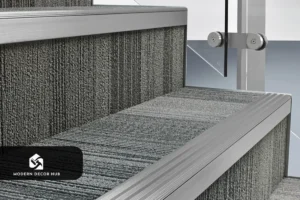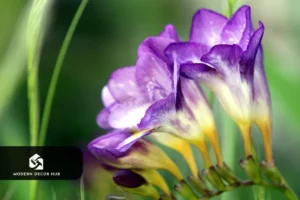Introduction
Welcome to the ultimate guide on Philodendron Birkin climbing, care, and growth secrets! If you’ve ever fallen in love with the striking white-striped leaves of the Philodendron Birkin, you’re not alone. This popular indoor plant isn’t just beautiful—it’s also surprisingly easy to care for when you know the right tricks.
Many people wonder: Does Philodendron Birkin climb? Or how do I take care of it so it grows healthy and vibrant? In this guide, we’ll break everything down for you in a simple, friendly way. You’ll learn about its growth habit, watering needs, light preferences, propagation methods, and even some fun display ideas to make your home look like a tropical paradise.
By the end of this guide, you’ll be confident caring for your Philodendron Birkin and helping it thrive indoors. Let’s dive in!
Understanding Philodendron Birkin
What Makes It Special
The Philodendron Birkin is known for its glossy green leaves streaked with creamy white variegation. Unlike many vining philodendrons, it has a self-heading growth habit, meaning it doesn’t naturally climb like a Philodendron hederaceum or a Monstera. This makes it ideal for tabletops, shelves, or compact indoor spaces.
Despite not being a typical climbing plant, it can develop aerial roots that can cling to supports if you want it to grow vertically. These roots are fascinating—they look like tiny tendrils that search for support and moisture.
Some quick highlights:
- Bright, indirect light enhances the white stripes on the leaves.
- Moderate watering keeps the roots happy and healthy.
- Average indoor humidity works, but higher humidity helps it thrive even more.
Growth Habit Explained
Understanding the growth habit is key to keeping your Philodendron Birkin happy. Here’s what you need to know:
- Self-Heading Plant – It grows upright from the base, producing leaves from the central stem.
- Climbing Potential – If you introduce a moss pole or stake, the aerial roots can attach to it, giving it a gentle vertical boost.
- Leaf Development – New leaves start small and expand gradually. Larger leaves develop in ideal conditions with proper light and humidity.
By knowing its natural habit, you can decide whether to let it remain compact or provide climbing support for a more dramatic display.
Climbing vs Upright Growth
Does Philodendron Birkin Climb Naturally?
Here’s the answer most people want: Philodendron Birkin doesn’t naturally climb like vining philodendrons. Its leaves grow from a central stalk, making it perfect for tabletops or shelves.
However, it’s also flexible. If you provide a vertical support structure, such as:
- Moss poles
- Wooden stakes
- Trellis structures
…its aerial roots can attach, giving the plant a subtle climbing ability. Keep in mind that it’s not as vigorous as classic climbing plants, so it won’t shoot up dramatically.
Why Support Can Be Helpful
Even though climbing isn’t necessary, support can:
- Encourage upright, tidy growth
- Allow larger leaves to develop
- Reduce the risk of leaning or drooping
So, if you want your Philodendron Birkin to look like a mini indoor tropical vine, providing a stake or pole is a smart idea.
Indoor Care Essentials
Light Requirements
One of the most important things for your Philodendron Birkin is the right kind of light. Think of light as its “energy source”—without it, your plant can become droopy or lose its beautiful variegation.
- Bright, indirect light is ideal. A spot near a north-facing window or a few feet away from a sunny window works perfectly.
- Avoid direct sunlight. Too much sun can burn the leaves, causing brown patches or fading the white streaks.
- Low light is tolerable, but your Birkin’s growth will slow, and the leaves may lose some of their creamy variegation.
Fun tip: Rotate your plant occasionally so all leaves get some light exposure. This helps it grow evenly and keeps the shape tidy.
Watering Guidelines
Philodendron Birkin watering can be a tricky topic, but here’s a simple rule: water when the top inch of soil feels dry. Overwatering is one of the main reasons Birkins struggle indoors.
- Check the soil: Stick your finger in the soil—if it feels moist, hold off watering.
- Water thoroughly: When you do water, make sure it drains freely. Avoid letting the plant sit in water, as this can lead to root rot.
- Seasonal adjustments: During winter, Birkins need less water since their growth slows.
Keep an eye on leaf health—yellowing leaves often signal too much water, while drooping leaves usually mean it’s thirsty.
Humidity & Temperature
Your Philodendron Birkin climbing or upright plant thrives in tropical-like conditions. Here’s how to give it a comfy home indoors:
- Humidity: 50–60% is perfect. You can use a humidifier, place the plant near a group of other plants, or mist occasionally.
- Temperature: 65°F–85°F (18°C–29°C) is ideal. Avoid placing it near cold drafts, air conditioners, or heaters.
A slightly humid environment not only keeps the leaves glossy but also encourages aerial roots to develop if you’re supporting it with a moss pole.
Soil & Fertilization
Healthy roots = healthy leaves! Your Philodendron Birkin needs soil that drains well but retains some moisture.
- Best soil mix: Combine standard potting soil with perlite or orchid bark to improve drainage.
- Fertilization: Feed every 4–6 weeks during the growing season (spring and summer) with a balanced houseplant fertilizer. Avoid over-fertilizing—it can burn the roots.
- Soil maintenance: Repot every 1–2 years to refresh the soil and give roots more space to grow.
Tip: Using a slightly acidic soil pH (around 5.5–6.5) helps your Birkin absorb nutrients more effectively.
Propagation Techniques
Step-by-Step Stem Cutting Method
One of the most exciting things about Philodendron Birkin is that you can propagate it and grow a new plant from a cutting. Here’s a simple guide:
- Choose a Healthy Stem – Pick a stem with at least one or two nodes and a few leaves. Make sure it’s healthy and free from pests or disease.
- Cut Carefully – Use clean, sharp scissors or pruning shears. Cut just below a node, as this is where new roots will grow.
- Remove Lower Leaves – Strip off the leaves near the cut end to prevent them from rotting when submerged in water or soil.
This method works for both indoor and semi-indoor propagation, making it perfect for beginners.

Water vs Soil Propagation
You have two main options to root your Philodendron Birkin cutting:
Water Propagation:
- Place the cutting in a glass of clean water, ensuring the nodes are submerged.
- Change water every few days to prevent bacteria growth.
- Wait 2–4 weeks for roots to develop. Once roots are 1–2 inches long, transfer to soil.
Soil Propagation:
- Plant the cutting directly in a small pot with well-draining soil.
- Keep the soil slightly moist but not soggy.
- Covering the pot with a clear plastic bag can help retain humidity, which speeds up rooting.
Both methods are effective, but water propagation lets you watch the roots grow, which is fun and rewarding!
Encouraging Aerial Root Development
Even though Philodendron Birkin climbing is not a vigorous vine, it can develop aerial roots if given the right environment.
- Use a moss pole or stake to guide the plant upward.
- Maintain higher humidity to encourage root growth.
- Gently press the aerial roots against the support—they will attach naturally over time.
Aerial roots not only help your plant cling to supports but also improve nutrient absorption and overall growth.
Troubleshooting Propagation Failures
Sometimes your cutting might struggle. Don’t worry—it happens! Here’s how to solve common issues:
- Roots not growing: Check light levels; cuttings need bright, indirect light.
- Leaves turning yellow: Overwatering is the culprit. Ensure proper drainage.
- Mold or rot: Reduce humidity slightly and make sure water or soil isn’t stagnant.
With patience and care, most cuttings will root successfully within 2–6 weeks.
Troubleshooting & Problem Solving
Common Leaf Issues
Your Philodendron Birkin leaves are like little signals—they tell you how happy your plant is. Here’s how to interpret them:
- Yellow Leaves – Often caused by overwatering or poor drainage. Make sure the soil dries slightly between waterings and the pot has drainage holes.
- Brown Leaf Tips – Usually a sign of low humidity or too much direct sunlight. Increasing humidity or moving the plant away from harsh light can help.
- Curling or Drooping Leaves – Could be underwatering, low humidity, or stress from sudden environmental changes. Water properly and maintain a stable indoor climate.
Keeping an eye on the leaves will help you catch problems early, preventing bigger issues down the line.
Pest Problems
Even indoor plants can attract pests. Common culprits for Philodendron Birkin include:
- Spider mites – Tiny webs and speckled leaves are a warning. Wipe leaves with a damp cloth and increase humidity.
- Mealybugs – White, cotton-like clusters on stems or leaves. Dab with rubbing alcohol on a cotton swab to remove.
- Scale insects – Brown, hard bumps on stems. Remove gently and apply insecticidal soap if needed.
Regularly inspecting your plant helps keep these pests under control and ensures your Birkin thrives.
Overwatering and Root Rot Prevention
Overwatering is one of the most common mistakes with Philodendron Birkin care. Root rot can happen if water pools in the pot. Here’s how to avoid it:
- Always use well-draining soil.
- Ensure your pot has adequate drainage holes.
- Water only when the top inch of soil is dry.
If root rot occurs, carefully remove affected roots and repot the plant in fresh soil. This will give your Birkin a second chance to grow healthy.
Pruning & Maintenance Tips
Pruning isn’t just for looks—it helps your Birkin stay healthy:
- Remove yellow, damaged, or dead leaves regularly.
- Trim overgrown stems to encourage bushier growth.
- Keep the plant dust-free by wiping leaves with a damp cloth; clean leaves photosynthesize better.
By following these simple maintenance tips, your Philodendron Birkin will stay vibrant and continue to impress indoors.
Advanced Care Tips
Seasonal Adjustments
Caring for your Philodendron Birkin climbing or upright plant is not the same all year round. Adjusting care based on the season can make a big difference:
- Spring & Summer: This is the growing season. Increase watering slightly and fertilize every 4–6 weeks with a balanced houseplant fertilizer. Bright, indirect light helps new leaves develop with crisp variegation.
- Fall & Winter: Growth slows down, so reduce watering and skip fertilization. Keep the plant away from cold drafts and maintain moderate indoor temperatures.
By adapting to seasonal changes, you’ll prevent stress and keep your Birkin vibrant year-round.
Rotating the Plant
Rotating your Philodendron Birkin every few weeks is a simple trick that can lead to healthier growth:
- Ensures all leaves get equal exposure to light.
- Prevents the plant from leaning toward one direction.
- Encourages even and symmetrical growth.
A 90-degree turn every 2–3 weeks is usually enough to maintain balance and improve the plant’s overall appearance.
Companion Planting
If you love indoor gardening, consider pairing your Philodendron Birkin with other houseplants:
- Tropical companions: Plants like Monstera, Calathea, or Pothos complement the Birkin’s foliage and thrive in similar humidity and light conditions.
- Placement tips: Arrange taller plants at the back and shorter ones at the front to create a layered, lush look.
- Humidity boost: Grouping plants together naturally increases local humidity, benefiting all the plants.
Companion planting not only looks beautiful but also creates a microenvironment that helps your Philodendron Birkin flourish.
Aesthetic & Display Ideas
Vertical Display with Moss Poles or Trellis
Even though Philodendron Birkin climbing is not a vigorous vine, a moss pole or trellis can transform its appearance:
- Moss poles allow aerial roots to attach and encourage vertical growth.
- A simple wooden or bamboo stake can also support the plant while keeping it upright.
- Vertical display helps the plant take up less floor space while still looking lush and full.
Fun tip: Wrap the moss pole in decorative twine or natural fiber for a cozy, jungle-like vibe.
Pairing with Decorative Pots
Choosing the right pot can elevate your Philodendron Birkin care and add style to your space:
- Material matters: Ceramic or clay pots improve soil aeration, while decorative resin pots offer lightweight versatility.
- Color coordination: Match the pot with your interior—neutral tones highlight the plant’s white variegation, while bold colors create a playful contrast.
- Drainage: Always ensure the pot has holes for proper drainage to prevent overwatering and root rot.
A well-chosen pot not only looks great but also supports the plant’s health.
Indoor Display Tips
Your Birkin can shine in any indoor setting with the right placement:
- Tables and Shelves: Perfect for self-heading growth; the plant remains compact yet eye-catching.
- Plant Corners: Group your Birkin with other tropical plants to create a lush indoor jungle.
- Light Access: Place near windows with bright, indirect light to maintain vibrant variegation.
- Rotation: Turn the plant occasionally to ensure all sides receive light for even growth.
Decorative displays make your home feel lively and help your Philodendron Birkin thrive simultaneously.
FAQs
Can Philodendron Birkin Climb Naturally?
While Philodendron Birkin climbing isn’t natural like vining philodendrons, it can develop aerial roots and attach to a moss pole or stake if you want it to grow vertically. However, it thrives perfectly well as a self-heading plant without climbing support.
How Fast Does Philodendron Birkin Grow?
Growth varies based on care, light, and humidity. Typically, a healthy Philodendron Birkin produces a few new leaves each month during the growing season. With bright, indirect light and proper watering, it can grow steadily and maintain its beautiful variegation.
How Often Should I Water My Philodendron Birkin?
Check the top inch of soil. Water when it feels dry. Overwatering is a common mistake that can cause root rot. During winter, reduce watering since the plant’s growth slows down.
Does Philodendron Birkin Need a Moss Pole?
Not necessarily. A moss pole or stake is optional. It can help your plant grow upright and encourage aerial roots, but your Birkin is naturally self-heading and will remain compact and healthy without vertical support.
How Do I Propagate Philodendron Birkin?
You can propagate by stem cuttings:
- Choose a healthy stem with at least one node.
- Cut just below the node.
- Place in water or soil. Roots will develop in 2–6 weeks.
Remember, maintaining bright, indirect light and proper humidity improves success rates.
How Do I Prevent Yellow Leaves?
Yellow leaves usually signal overwatering or poor drainage. Ensure the pot has drainage holes, water only when the top inch of soil is dry, and avoid letting water sit in the saucer.
Can Philodendron Birkin Thrive in Low-Light Rooms?
Yes, but growth will be slower and variegation may fade. For best results, place your Birkin in bright, indirect light. Rotate occasionally to ensure all leaves get light exposure.
Is Philodendron Birkin Beginner-Friendly?
Absolutely! With basic care, including proper light, watering, and occasional fertilization, even beginners can enjoy a healthy and beautiful Philodendron Birkin indoors.
Conclusion
Caring for your Philodendron Birkin can be simple and enjoyable. From understanding its self-heading growth habit to optional climbing support, proper light, watering, humidity, soil, and even propagation, this plant can thrive indoors with just a few thoughtful tips.
Remember to:
- Give it bright, indirect light
- Water when the top inch of soil is dry
- Maintain moderate humidity
- Support aerial roots with a moss pole if desired
- Propagate using stem cuttings for extra plants
With patience and love, your Philodendron Birkin climbing or upright will become a standout feature in your home. Enjoy the journey and watch your plant grow into a lush, tropical masterpiece!




